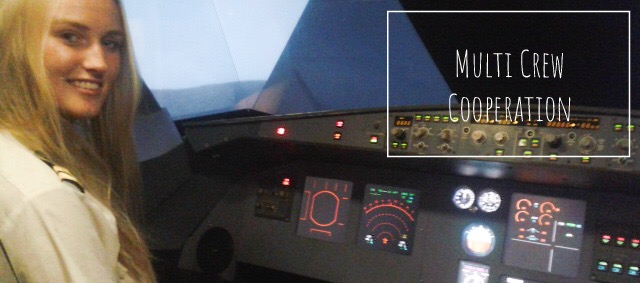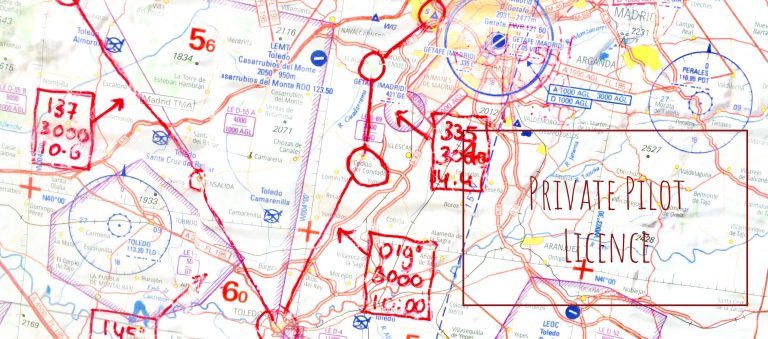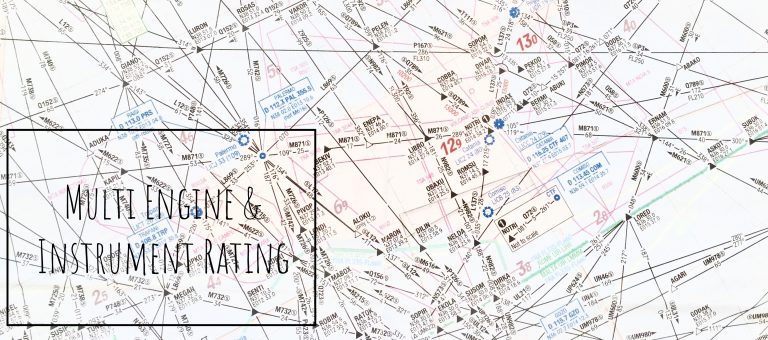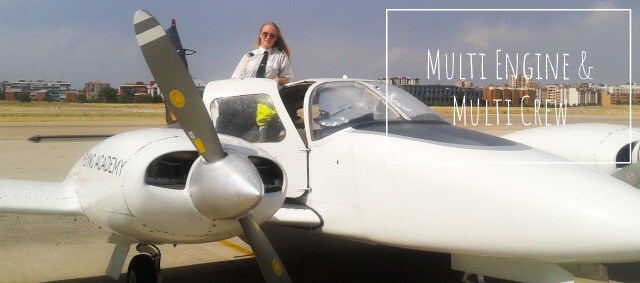So here we are, at the final course of flight school: The Multi Crew Cooperation (MCC) course! So far, you’ve learned how to fly single and multi engined aircraft, but even though you were often with your instructor, these planes are all single-pilot aircraft, which means that they can be flown by one pilot only.
Big jets such as Airbus and Boeing aircraft require a minimum of two pilots. One that takes care of the flying whilst other one talks on the radio, checks the fuel and aircraft status and fills the flight plan. In case of a system malfunction, the Pilot Not-Flying – PNF (or Pilot Monitoring – PM) tries to solve the issue using the Quick Reference Handbook (QRH) and the Pilot Flying (PF) continues to fly the aircraft.
In the MCC course we learn to work together in the cockpit. We do this in a simulator. First, we learn a little bit about the new jet aircraft, so that we know how to fly it and how the systems work. But the course isn’t so much about how to fly a jet aircraft. It is focussed on how to work together in a multi-crew environment, in normal operations but also, and especially, in abnormal and emergency situations.
It is very important to use proper communication and standard call-outs to have a clear, clean environment between each other. The most important thing in the MCC course is Crew Resource Management (CRM). It is all about using all available resources, about all the non-technical topics of aviation: about working together, about decision making, about stress management, about fatigue, about communication.
The jet aircraft is flying much faster than the propeller aircraft that you’ve flown so far, so you have to get used to the fact that you need to respond much quicker to make sure all the interceptions and approaches are flown correctly. In a normal situation you have the Pilot Not-Flying to check if you do everything correctly, but if he/she is trying to cope with a system malfunction or engine failure, you don’t really have this back-up.
Being the Pilot Not-Flying, you are trying to assist the Pilot Flying as much as possible. You can be Pilot Flying or Pilot Not-Flying regardless of whether you are the captain or not. In the MCC course, you will learn how to function either as captain or as first officer, either as Pilot Flying or Pilot Not-Flying.
The instructor and/or examiner wants to see you working well together, whether you are friends or not, whether you know each other well or have never seen each other before. The key to making that happen, is Standard Operational Procedures (SOPs). These are the procedures, listed as duties for both the Pilot Flying and the Pilot Not-Flying, in the necessary sequence and with the necessary call-outs to keep both pilots in the loop of what is going on.
It’s really much fun, but you have to be very focussed on your partner. The goal is to work together, not to show that you can fly well. It’s all about team work and not about individual performance.
I like to say that a good pilot is only a great pilot if he knows how to cooperate well. Flying skills will grow with experience, nobody is expected to know how to fly a plane in the beginning. But Crew Resource Management is something that will help you and your crew in any situation. To cope well with stress, to be friendly and supportive, to communicate clearly with all crew and to follow Standard Operational Procedures!





All my dream is to become a pilot but my status will not allow me to access who I wanted to be.I wish this school at one time been extended to my country I would be better.but still my song all day is never give up.I hope one day my dream will come true
Don’t give up! You have the right motivation to follow your dreams! I wish you the best of luck!